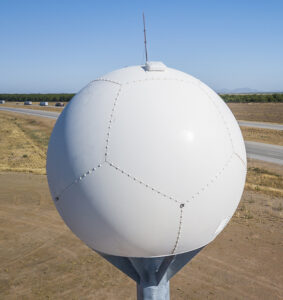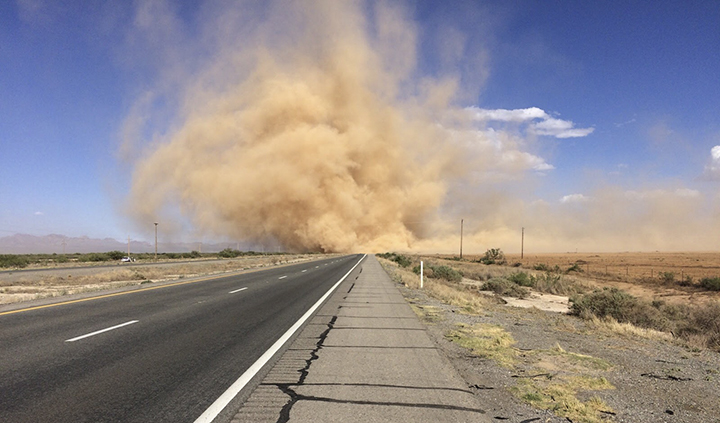PHOENIX — With its first monsoon season under its belt, data shows that the Arizona Department of Transportation’s (ADOT) dust-detection and warning system works as designed, the agency reported Nov. 4. Monsoon 2020, however, was not the most robust weather event, jokingly dubbed a “nonsoon,” the statement continued.
“It was a mixed blessing,” said David Locher, resident engineer for the project. “Less dust storms is obviously a good thing when it comes to driving conditions; however, we didn’t have the normal weather events that would have been ideal for data gathering in our first season.”
During this year’s monsoon season, there was one 20-minute event that provided measurable data. At one point during the storm, visibility dropped to less than 300 feet, triggering the speed limit to incrementally drop to 35 mph. How did drivers react to the warning system? Loop detectors showed the average vehicle was driving about 45 mph, a big drop from the normal 75 mph limit.
“We do know that the system is working — it is doing what it’s supposed to,” said Kevin Duby, Arizona’s statewide road weather manager. “Our next step is to take the data we have to evaluate and determine the efficiencies of the system to improve performance.”
Dust storms between Tucson and Phoenix have been a safety concern for several years. A study continued between 2010 and 2015 detailed how traffic was impacted along the Interstate 10 corridor, showing 83 dust-related crashes; more than half of those crashes occurred within about a half-mile of each other. The study identified a 10-mile area between mileposts 209 and 219 as the focus of safety efforts.
In 2016, ADOT, along with Arizona Department of Public Safety and National Weather Service staff, vendors and contractors, began working to create a system to help Arizona drivers be better equipped to deal with dust storms. A Federal Highway Administration grant was secured to help fund the $72 million project, which also included widening I-10 and making improvements to the State Route 87 traffic interchange.

The dust-detection technology employs overhead message boards, variable speed-limit signs, closed-circuit cameras and short-range sensor units that detect that detect blowing dust. The system also includes a long-range weather X-Band radar dish, mounted atop a 22-foot pole at the State Route 87 interchange; this unit can detect storms more than 40 miles away. X-Band, which picks up a frequency range from 8 to 12 gigahertz, is most often used for civil, military and government radar applications such as weather monitoring, air-traffic control, maritime vessel traffic control, defense tracking and vehicle speed detection for law enforcement. The lower frequencies make this band suitable for the harshest weather conditions, providing exceptionally high link availability for weather-monitoring radar solutions, ADOT noted.
Despite not experiencing many significant storms during its inaugural season, the first-of-its-kind dust-detection and warning system received regional recognition in the 2020 America’s Transportation Awards. In addition, the National Weather Service named ADOT as a 2020 Weather Ready Nation Ambassador of Excellence for its goal of protecting life and property through proactive public outreach and hazard mitigation efforts; the award specifically cited the dust detection system.
The Trucker News Staff produces engaging content for not only TheTrucker.com, but also The Trucker Newspaper, which has been serving the trucking industry for more than 30 years. With a focus on drivers, the Trucker News Staff aims to provide relevant, objective content pertaining to the trucking segment of the transportation industry. The Trucker News Staff is based in Little Rock, Arkansas.








